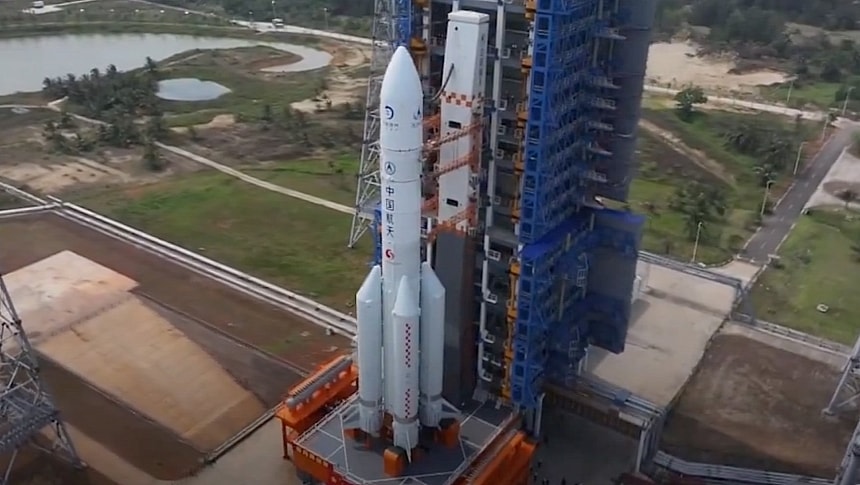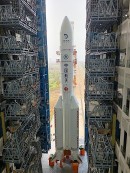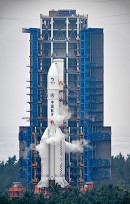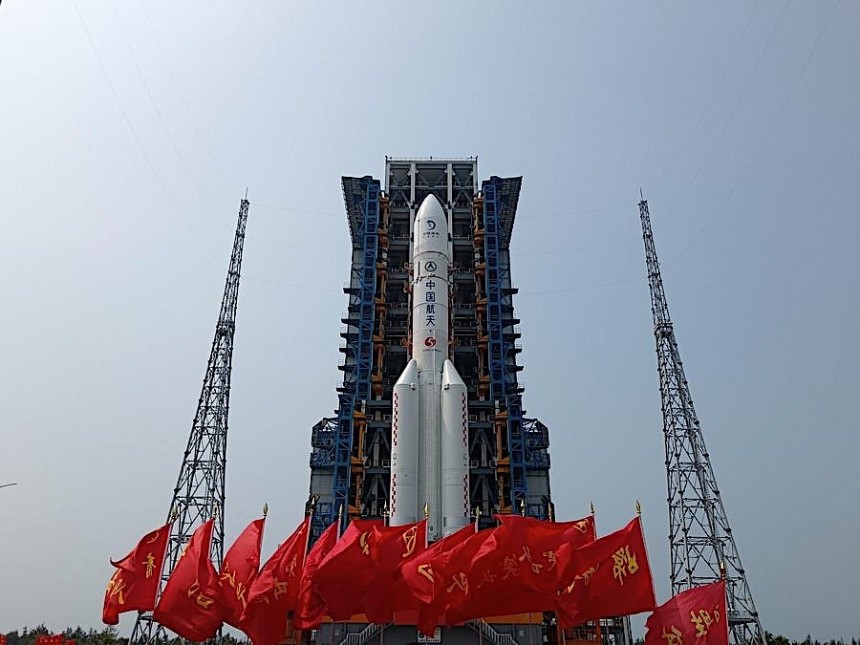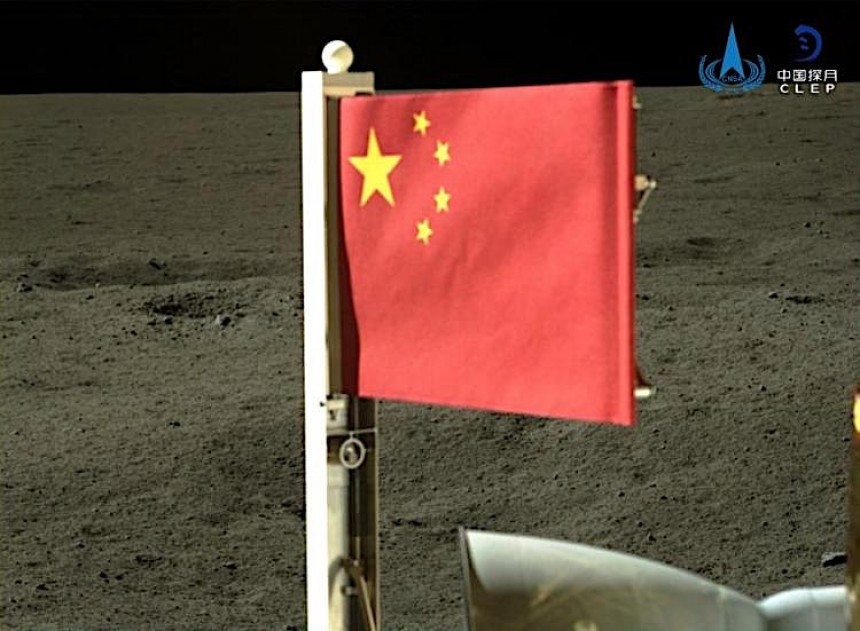We're at a point in our history when bringing back pieces of alien worlds, be them planets, asteroids, or satellites, no longer surprises anybody. But we're generally used to American NASA being responsible for such feats, so when another nation does something that was never done before in this field of space exploration, the world immediately pays attention.
Back at the beginning of May the China National Space Administration (CNSA) launched a daring mission to the far side of the Moon, the one that's always hidden from sight. The mission was simple: land, spend some time gathering samples, and then bring them back to Earth.
The Chinese are no strangers to visiting the far side of the Moon. In fact, the country was the first in the world to do this when back in 2019 a mission called Chang'e-4 managed the first-ever soft landing there.
And they are no strangers to gathering samples, either. In 2020, the Chang'e-5 mission landed on the near side and collected samples from there.
By combining the two achievements the Chinese gave birth to the Chang'e-6 mission and accomplished something no other nation accomplished before: return samples from the always invisible side of the Moon.
After being launched by a Long March-5 rocket from the Wenchang Space Launch Center on the Hainan island on May 3, Chang'e-6, comprising an orbiter, a lander, an ascent vehicle, and a re-entry module headed for the Moon, which it reached on June 1.
The lander touched down in a region of the Moon called the South Pole-Aitken Basin, an impact crater 1,600 miles (2,500 km) in diameter that probably formed four billion years ago. The hardware was immediately put to work its multitude of sensors (microwave, laser, gamma-ray, and optical) and the all-important drill and robotic arm in an effort to snatch pieces of the satellite that have never been touched by a sentient species.
Three days later, on June 4, the ascent vehicle departed the surface of the Moon, carrying in its belly the samples collected previously. At the same time, on the surface of the Moon, a Chinese national flag "was unfurled for the first time on the far side of the Moon."
On June 7, the samples were transferred from the ascent vehicle to the orbiter and the ship that was supposed to bring the bits of Moon back to our planet. The Chang'e-6 mission ended today, June 25, with the re-entry module touching down in the northern Inner Mongolia region where it was supposed to.
The module came down the way all such modules do, by using a parachute. It is believed inside it are around 4.4 pounds (two kg) of material in the form of dust and small rocks.
The samples are seen as crucial for the understanding of the conditions present in the solar system early in its life. That's because the Moon, especially the far side, is like "a frozen record of what it was like" back then, James Head, professor of planetary geosciences at Brown University, was quoted as saying by CNN.
Aside from giving a glimpse into the past of the solar system and perhaps of Earth itself, the samples could give us a better understanding of how we can use the resources available on the Moon for the benefit of humanity's upcoming space exploration missions.
It's unclear what the exact expectations are, but the potential is huge, especially given how the far side of the Moon is completely different, at least in terms of aspect, to the one that's always facing us, being riddled with impact craters.
China plans to have its scientists look at the samples first, and only then will it share them with international researchers. It's unclear how much time that will take, but if past experience, especially the one with the Chang'e-5 mission, is any indication, it could be years.
Now that the Chang'e-6 mission is over, the Chinese will start preparing the final two flights of the program, which debuted in 2007. Chang'e-7 is scheduled to depart in 2026, targeting the lunar south pole, the exact same place the astronauts of the Artemis program are scheduled to visit, in a bid to find usable resources.
Finally, Chang'e-8 will leave in 2028 on a mission to prepare for the arrival of the first Chinese astronauts on the Moon and finding ways to use the available resources.
China plans to have taikonauts up there by the end of the decade, and dreams of even having a surface research station up and running at the south pole, the place where all space agencies believe the Moon could hide all-precious water.
So, now that we have in our hands samples from the far side of the Moon, the first space race between the U.S. and China is about to begin. The prize: being the first to set up a base up there, and potentially laying claim to whatever can be found on site.
The Chinese are no strangers to visiting the far side of the Moon. In fact, the country was the first in the world to do this when back in 2019 a mission called Chang'e-4 managed the first-ever soft landing there.
And they are no strangers to gathering samples, either. In 2020, the Chang'e-5 mission landed on the near side and collected samples from there.
By combining the two achievements the Chinese gave birth to the Chang'e-6 mission and accomplished something no other nation accomplished before: return samples from the always invisible side of the Moon.
After being launched by a Long March-5 rocket from the Wenchang Space Launch Center on the Hainan island on May 3, Chang'e-6, comprising an orbiter, a lander, an ascent vehicle, and a re-entry module headed for the Moon, which it reached on June 1.
Three days later, on June 4, the ascent vehicle departed the surface of the Moon, carrying in its belly the samples collected previously. At the same time, on the surface of the Moon, a Chinese national flag "was unfurled for the first time on the far side of the Moon."
On June 7, the samples were transferred from the ascent vehicle to the orbiter and the ship that was supposed to bring the bits of Moon back to our planet. The Chang'e-6 mission ended today, June 25, with the re-entry module touching down in the northern Inner Mongolia region where it was supposed to.
The module came down the way all such modules do, by using a parachute. It is believed inside it are around 4.4 pounds (two kg) of material in the form of dust and small rocks.
The samples are seen as crucial for the understanding of the conditions present in the solar system early in its life. That's because the Moon, especially the far side, is like "a frozen record of what it was like" back then, James Head, professor of planetary geosciences at Brown University, was quoted as saying by CNN.
Aside from giving a glimpse into the past of the solar system and perhaps of Earth itself, the samples could give us a better understanding of how we can use the resources available on the Moon for the benefit of humanity's upcoming space exploration missions.
China plans to have its scientists look at the samples first, and only then will it share them with international researchers. It's unclear how much time that will take, but if past experience, especially the one with the Chang'e-5 mission, is any indication, it could be years.
Now that the Chang'e-6 mission is over, the Chinese will start preparing the final two flights of the program, which debuted in 2007. Chang'e-7 is scheduled to depart in 2026, targeting the lunar south pole, the exact same place the astronauts of the Artemis program are scheduled to visit, in a bid to find usable resources.
Finally, Chang'e-8 will leave in 2028 on a mission to prepare for the arrival of the first Chinese astronauts on the Moon and finding ways to use the available resources.
China plans to have taikonauts up there by the end of the decade, and dreams of even having a surface research station up and running at the south pole, the place where all space agencies believe the Moon could hide all-precious water.
So, now that we have in our hands samples from the far side of the Moon, the first space race between the U.S. and China is about to begin. The prize: being the first to set up a base up there, and potentially laying claim to whatever can be found on site.
